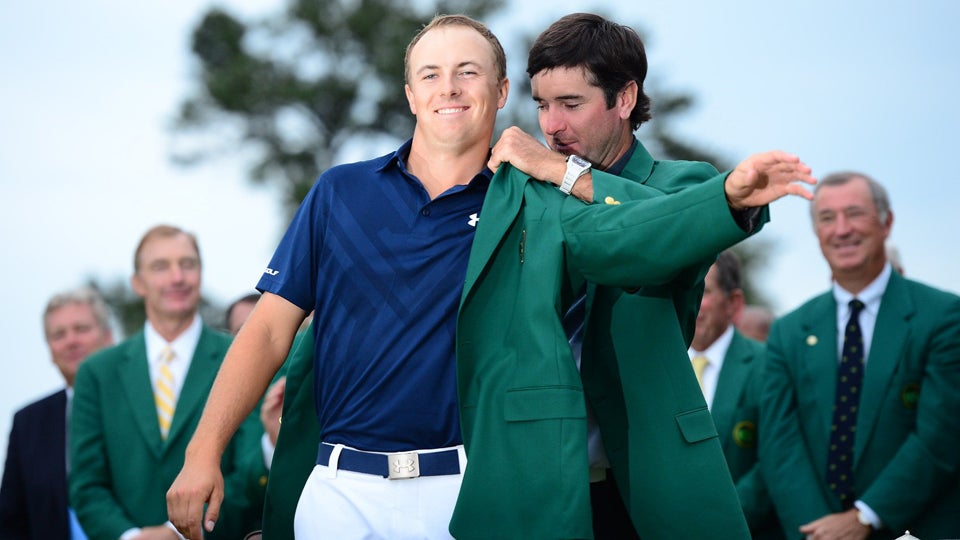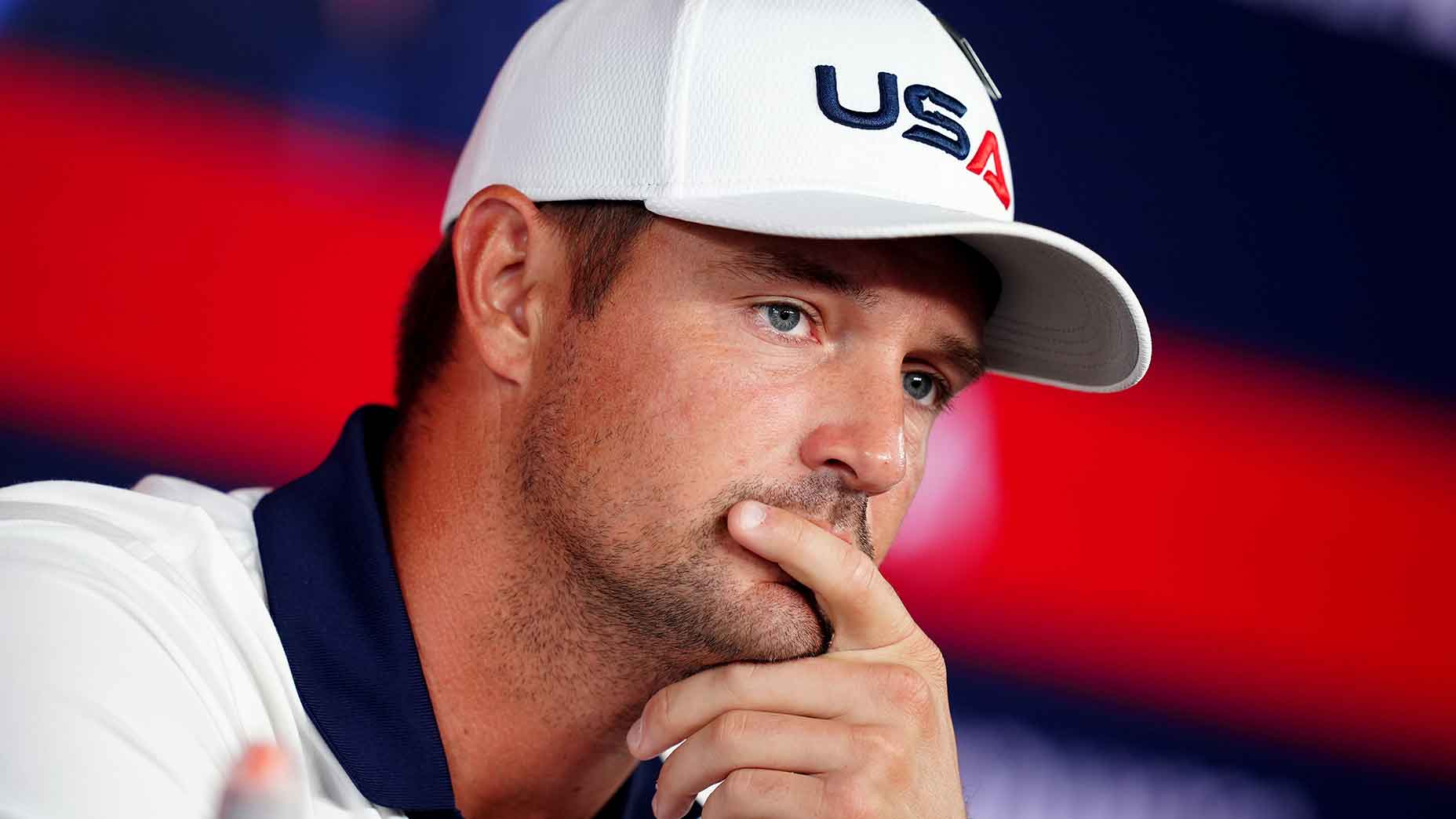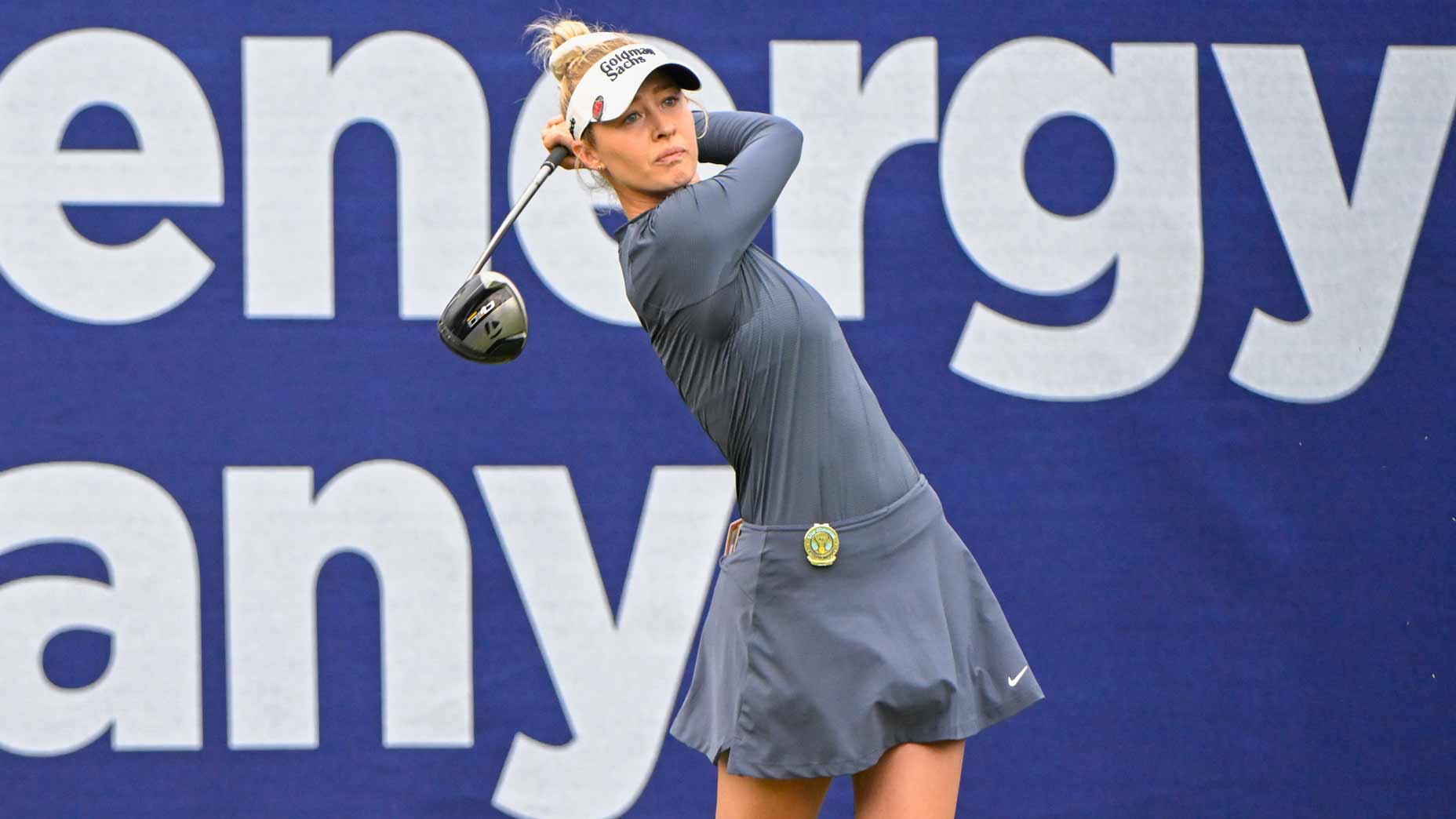The best-golfer-ever debate generally boils down to three, maybe four, names. Jack, Tiger, Hogan, Jones. But what about the best PGA Tour season ever? Regrettably the statistical genius that is ShotLink, which mines nearly every facet of a player’s season, has been around only for 13 years. So we went old school and conceived our own points system to bridge the generations and rate the greatest seasons of all-time.
To establish our humble ranking, we awarded players one point for each win in a given season and four points for each major title; we also assigned each season a Historical Impact Rating of one to five points, which accounts for how engrained that season is in the collective conscience of golf fans. Subjective? Of course! Isn’t every ranking? Enjoy.
22. Tom Watson — 1980 (12 points)
Seven wins, one major. HIR: 2
There is something to be said for consistency, which Tom Watson embodied throughout his career. Though he won multiple majors in 1977 and ’82, in ’80 Watson won seven times (including a British Open), four more than any other player. Watson never finished outside the top-20 in 22 events and won a staggering 41.68% of the potential purse available to him. It was around this time that Watson grabbed the PGA Tour baton from Nicklaus.

21. Nick Price — 1994 (13 points)
Six wins, two majors. HIR: 1
Similar to Miller’s ’74 season, Price’s best season was a bit of a transitional period between Watson/Nicklaus and the reign of Tiger Woods. Still, the PGA Tour was ripe with talent, including Greg Norman, Nick Faldo, Ernie Els and others. Price won consecutive majors at the British Open and PGA Championship in addition to four more wins on Tour. He ascended to World No. 1 for the first time in his career.
20. Jack Nicklaus — 1963 (13 points)
Five wins, two majors. HIR: 2
Nicklaus officially arrived as a dominant force during the 1963 season. Though he already had his first major and another pair of wins, ’63 brought a pair of major victories and essentially stands as the beginning of the Tour’s transition from Arnie’s playing field to Nicklaus’s. That year, Jack won his first green jacket, his first PGA Championship and his first Player of the Year award.
19. Tom Watson — 1977 (13 points)
Five wins, two majors. HIR: 2
Eighteen months passed between Watson’s 1975 British Open victory and his next step into the winner’s circle, but ’77 would prove to be his most fruitful season to date. Watson won five times, including his first Masters and a second British Open. The runner-up in both of those wins? Jack Nicklaus.
RELATED: A Duel in the Sun: Tom Watson vs. Jack Nicklaus
18. Tiger Woods — 2002 (13 points)
Five wins, two majors. HIR: 2
It says a lot when a two-major, five-win season is not your best, second-best or even third-best season on the PGA Tour. Woods’s 2002 came and went as was expected, now that he had joined the discussion of is-he-the-best-ever. Woods won the Masters and the U.S. Open to kick off the calendar Grand Slam conversation, each of them by three strokes. The Open was at Bethpage Black in New York, where Woods triumphed over two of his career rivals, Phil Mickelson and Sergio Garcia.

17. Sam Snead — 1950 (13 points)
11 wins, zero majors. HIR: 2
Snead won an impressive 11 events (he also tied for first at the Bing Crosby Pro-Am and won a two-player team event with Jim Ferrier), but he was unable to add to his major championship total or defend his title at Augusta National. Zero majors prevent a special season from being considered elite, but 11 wins is 11 wins and a major reason why he still owns the career Tour victory record with 82.
16. Lee Trevino — 1971 (13 points)
Five wins, two majors. HIR: 2
In 1971, Trevino became the first player to pull off what is now regarded as the Open Slam, winning the U.S. Open, the Canadian Open and the British Open all in the same summer. Trevino did it in a span of just 20 days, kicking it off by beating Nicklaus in a playoff at Merion. It was the only year Trevino would claim Player of the Year honors.

15. Vijay Singh — 2004 (13 points)
Nine wins, one major. HIR: 1
No other modern player (and season) stood up to the greatness of Tiger Woods better than Singh’s 2004 campaign, when he won nine times and claimed $10.9 million in loot (more than Woods has ever won in a Tour season). Always a phenomenal ball-striker, Singh’s average of 2.339 strokes gained tee-to-green that year has only been topped in the ShotLink era by Tiger Woods (’06, ’07) and Rory McIlroy (’12). Though not all top 10s are created equal, Singh’s 18 top-10s in ’04 was the most on Tour since Tom Kite in 1981.
14. Sam Snead — 1949 (14 points)
Six wins, two majors. HIR: 2
Snead’s first multi-major season came in 1949, ending a 2-year streak of major-less seasons. Snead claimed his first green jacket and third leg of the career Grand Slam (He’d never win the U.S. Open), adding a second PGA Championship later that year. He continued to dominate the Tour landscape with victory totals, winning five or more events for the sixth time in his career.
13. Jack Nicklaus — 1975 (14 points)
Five wins, two majors. HIR: 3
In 1975, Nicklaus officially became the greatest champion of all-time. While he entered the year holding the career major record, he left no doubt who was the greatest by adding on another pair of majors at age 35. The Golden Bear’s career was far from over, and he proved to be as great as ever by winning five tournaments for the seventh and final time in his career.
12. Tiger Woods — 2005 (15 points)
Six wins, two majors. HIR: 3
Much like 2002, 2005 was not Woods’s best or second-best season, but he still managed to win six events, two majors and 46.73% of the purse money available to him. That comes out to $10.6 million. The 2005 season earns him special historical props as Woods’s Masters win offered us one of the greatest televised shots in the history of the game. Woods followed that up with his second career British Open victory at St. Andrews, a five-shot, wire-to-wire win.
11. Jordan Spieth — 2015 (15 points)
Five wins, two majors. HIR: 4
The most recent season on the list, Spieth’s 2015 was historic not only because of his accomplishments, but also because of his age. Spieth spent most of the Tour season as a 21-year-old and chased the calendar-year Grand Slam all the way to his final putt on the 72nd hole of the British Open at St. Andrews. He wound up settling for fourth, and month later finished second at the PGA Championship. As Jake Nichols wrote for GOLF.com, Spieth’s cumulative major championship performance in 2015 (to the tune of 54-under-par) earned him an expected major count of 2.16, by far the highest in the last eight years.

10. Ben Hogan — 1946 (17 points)
13 wins, one major. HIR: 1
Hogan’s 1946 campaign was his true coming-out party. In the 1946 PGA Championship, he waxed Ed Oliver 6 and 4 in the final and finished in the top-5 at both Augusta and the U.S. Open. Hogan also won 12 other tournaments, but the single major keeps Hogan’s ’46 season from reaching the same significance as others.
9. Arnold Palmer — 1960 (17 points)
Eight wins, two majors. HIR: 3
Palmer was The King of golf as the Fifties turned to the Sixties, and he proved it at every major in 1960. Palmer stoked the calendar-Grand-Slam fire by taking the Masters and U.S. Open before finishing second (to Kel Nagle) at St. Andrews and tying for 7th at the PGA Championship. His won eight tournaments for the first time in his career.
8. Jack Nicklaus — 1972 (17 points)
Seven wins, two majors. HIR: 4
Nicklaus’ sustained brilliance will always stand tall on its own, but it’s a surprise that he never mustered a top 5 all-time season. In ’72, he won the Masters and U.S. Open, each by three strokes and in dominant, wire-to-wire fashion. A month after claiming the Open at Pebble Beach, Nicklaus finished just two shots shy at the British Open from holding all four major championship trophies at the same time. He’d win another five Tour events that year and finish second at three others.

7. Ben Hogan — 1948 (18 points)
10 wins, two majors. HIR: 2
1948 was the first year Hogan claimed multiple majors as he won the U.S. Open and PGA Championship. He walked away with the latter by a score of 7 and 6 over Mike Turnesa. His Open victory came at the famed Riviera Country Club known to this day as “Hogan’s Alley.” Hogan won the LA Open at Riviera earlier that year and seven other Tour events that season.
6. Arnold Palmer — 1962 (18 points)
Eight wins, two majors. HIR: 4
The King claimed his third Masters and his second British Open in 1962, a year made more impressive because Nicklaus and Gary Player were hitting their strides. Palmer beat Player in a playoff at Augusta and dominated the British Open, winning by six. Palmer won six more titles that season, including a blowout, 12-stroke win at the Phoenix Open.
5. Tiger Woods — 2006 (18 points)
Eight wins, two majors. HIR: 4
Woods earned 58% of the potential purse money available to him in this 15-event season. Woods won the British Open and the PGA Championship (reaching 18-under-par in each event), two WGC titles and four other tournaments during a year in which his father died of cancer. Woods, at 30, won six consecutive Tour starts (seven if you include the 16-person World Challenge in November).
4. Ben Hogan — 1953 (19 points)
Five wins, three majors. HIR: 5
Hogan’s season becomes more impressive when you factor in that his five wins came in just six events. More important, three of them were majors, as Hogan won every major in which he competed: the Masters, U.S. Open and British Open. It wasn’t only that he won all three, but also how he won them. Hogan won the Masters by five strokes, the U.S. Open by six and the British Open by four. (It would be his only appearance at the British, and he made it count.) trailing only Walter Hagen at the time for career major championships. At that time in Hogan’s career (just a few years removed from a near-fatal car accident) the PGA Championship was match play and included several 36-hole days. Hogan chose to skip it, leaving us with one of the perpetual what-ifs in golf history.

3. Bobby Jones — 1930 (21 points)
Four majors. HIR: 5
Jones was a lifelong amateur but his 1930 season is so cemented in golf lore — four majors in a calendar year — that it cannot possibly be excluded from this list. Jones swept what were then considered golf’s four majors (U.S. Open, British Open, U.S. Amateur and British Amateur). Both amateur events were match play at the time, and Jones dominated – winning his U.S. Amateur final 8 and 7 and the British Amateur 7 and 6.
2. Byron Nelson — 1945 (23 points)
18 wins, one major. HIR: 2
Yes, 18 wins. While Nelson’s competition may have been a step below today’s game, his total domination has no equal. Nelson finished in the top-10 in all 30 events he entered. Because the season took place during the final year of World War II, the PGA was the only major championship staged. Can you guess who won? Yep, Nelson. While this season is far and away the winningest of all-time, the competition level and lone major keep it just a notch below its modern equivalent.

1. Tiger Woods — 2000 (23 points)
Nine wins, three majors. HIR: 5
Woods’s 2000 season is the modern standard for PGA Tour brilliance. Woods won nine times, including the year’s final three majors (the first two by incredible margins of 15 and eight strokes, respectively) and finished in the top five in 17 of 20 events. At age 24, Woods had pundits debating “Tiger vs. the field” in his starts, and pushed the sport to its own peak in global popularity. In sum, Woods won an incredible 63% of the potential purse money available to him (had he won 20 times, he would’ve won 100%), which, in a 20-event season, is a number that likely will never be topped.







